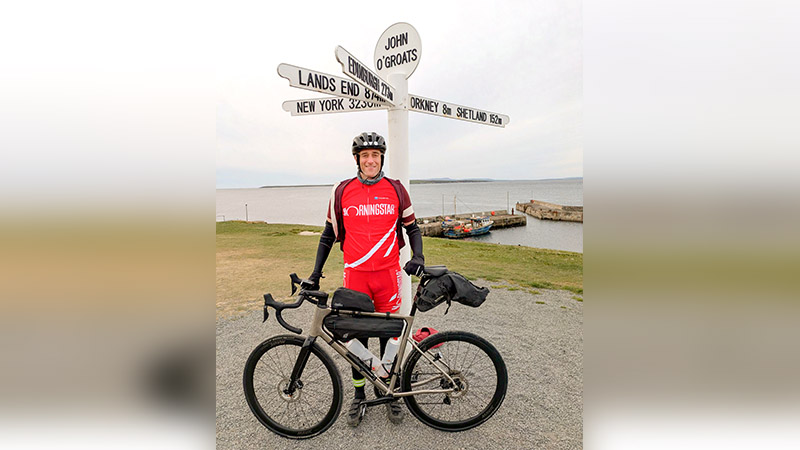In the past year, I’ve cycled thousands of kilometers solo, pursuing world records in ultra-endurance cycling. When I’m not pedalling across continents, I sit in Morningstar’s fund research team in London. The long hours alone on the bike have given me plenty of time to ruminate on the following parallels between achieving success in ultra-cycling and investing.
1. Set long-term, realistic goals – and build towards them
Success in both cycling and investing starts with clear, achievable goals. My big objective is competing in the Transcontinental Race in August 2025, supported by weekly training targets and challenging solo rides. This structure prepares me physically and mentally.
Investors also need long-term financial goals, such as retirement or education funding, to guide their journey. Smaller, manageable steps – regular saving, diversified asset allocation, disciplined rebalancing – become part of a cohesive strategy rather than disconnected actions.
Goal-setting protects against short-term impulses. Just as I resist pushing too early in a ride, investors should resist chasing quick gains.
2. Manage emotions – good and bad
Ultra-cycling is an emotional rollercoaster. When you feel invincible, the temptation is to push too hard, which risks burnout later. As ultra-cycling legend and friend Emily Chappell advises: “When you feel bad, eat. When you feel good, slow down.” Similarly, investors must avoid overconfidence during bull markets, which can lead to risky moves just before a downturn.
Keeping grounded in the face of success tends to lead to better long- term outcomes. During low points – like when I added 30km by a wrong turn during my Germany north-to-south record attempt – my instinct was to panic and speed up. But experience taught me to stay calm and pace myself. Investors face similar traps when losses tempt them to chase recovery. Emotional resilience, supported by systems that limit impulsive decisions, often separates those who succeed.
3. Stick to the facts
Reliable data is critical in cycling and investing. I rely on GPS tracking, heart rate and elevation profiles to manage effort and adapt strategy. Focusing on the data also prevents me from reacting purely to perceived fatigue or emotion. Similarly, investors need solid data and research to evaluate assets, risks and market trends. Poor information can lead to bad timing, losses, or missed chances. In both fields, data is a stabiliser that helps navigate complexity and target long-term success.
4. Preparation trumps prediction
Success isn’t about predicating every twist – unexpected obstacles will arise. In my upcoming Sweden north-to-south attempt I’ll ride through remote regions, I’ve mapped routes and alternatives for food, shelter and gear. I carry contingencies for clothing and bike repairs. Preparation doesn’t remove uncertainty but improves the odds when plans diverge from reality.
Investing shares in this principle. No one can predict markets or pick winners with certainty. At Morningstar, we conduct deep due diligence – evaluating managers’ processes, fees, team experience and alignment with investors. The aim is to stack the deck through preparation, not predicting what the market will do tomorrow.
5. Know the edge – and when it’s disappearing
Understanding a fund manager’s edge – the repeatable advantage – is essential to distinguish skill from luck and assess sustainability.
In my Scotland record attempt, a mechanical issue forced me to ride all day on my big front cog, which meant expending much more effort on hills. To anyone tracking online, this looked like a strong, sustainable performance, but the consequences hit on day two, when my performance dipped.
The lesson? From the outside, performance can be deceiving. Similarly, a fund may outperform temporarily, but without knowing the drivers, investors risk overestimating long-term success probabilities. Was success due to insight, specific market conditions, or a now-lost advantage? Just as unsustainable effort in cycling eventually fails, investing success without an enduring edge fades. Continual reassessment of that edge is key to staying ahead.
Kenneth is cycling to raise money for the Down’s Syndrome Association.
This article originally appeared in the July/August issue of Portfolio Adviser magazine

